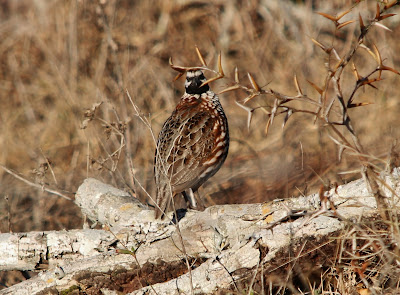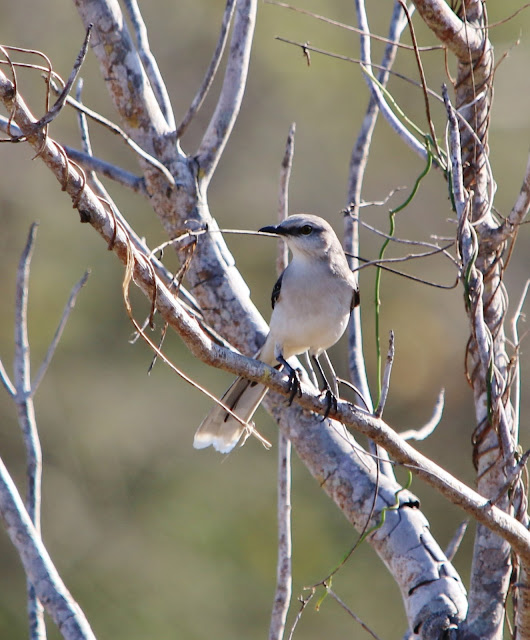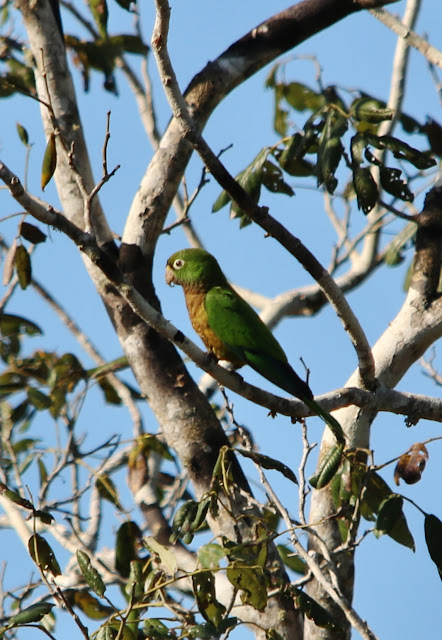For the past 10 years, we have been travelling to Mexico on a tourist visa. This is the visa form that you fill out on the plane and they give you a small part to keep with your passport until you leave the country and give that back to them.
As we have never stayed for more than 6 months, so far, the tourist visa has worked just fine for us. Many of our friends here have had what used to be called FM-2 visas (now called residente temporal) and FM-3 visas (now called residente permanente) but they are generally living here full-time or at least longer than 6 months.
The rules around visas, as far as how to apply, why you need one, what benefits it provides, all have changed a few times over the past decade. We have heard stories from people not being able to get one, to visas expiring and they have to leave the country, to others who have never had an issue with them. So, the thought of applying for a resident visa of any kind was a little worrisome as I expected some difficulty at the very least. Regardless, about a year ago we decided to look into the whole visa thing a little closer, especially now that all the rules have changed yet again.
Now that we are retired, it is very possible that we may want to stay here longer than 6 months, or even for several years. So it would be nice to have that option at least, rather than trying to go through the application process after arriving at a situation where we suddenly need it. I also saw some other potential advantages to having residency.
It used to be that you could not have a bank account here without a resident visa but that has apparently been relaxed. But, the way they keep changing rules around here, it still seems like a better idea to have residency before trying to get a bank account, credit card, etc.
Car ownership is possible without residency but not registration and insurance. Luckily, we have a sharing arrangement with a permanent resident for car use, but when that one wears out, what next?
If you have a Residente Permanente card, your Notary may approve you for the Home-owners exemption from paying the 25% gains tax on a future sale of your Mexican home – a potential savings of $10′s – $100′s thousands of dollars.
The new residente temporal visa would cover most of our current needs, but you have to renew it annually, (at a cost and with the inconvenience of paperwork, appointments, etc.) and eventually have to get the residente permanente visa. And now, you can apply directly for the residente permanente visa without needing the temporary one first, so we decided to go straight to that.
The process starts back in Canada, at the Mexican Consulate nearest your home. For us, it was the
Mexican Consulate in Vancouver. Not speaking very much Spanish, this website was a difficult place to begin. However, down along the left-hand side there is one English phrase, "
Consular Services for Foreigners". Clicking here takes you to a partially English section and then you can click on the second choice, "
VISAS". This takes you to yet another page with a variety of choices, (all in English, luckily) and you can click on "
PERMANENT RESIDENT VISAS". This will take you to the following clear and simple instructions to begin your resident application process.
PERMANENT RESIDENT VISA
Foreigners who wish to remain in Mexico indefinitely may apply in person for a Permanent Resident Visa at the
Consular Office closest to their place of residence.
REQUIREMENTS:
1. Visa application form printed on one page, double-sided, properly completed and signed.
2. Valid passport or travel and identity document, original and a photocopy of the page containing the photograph and personal data.
3. Original and a photocopy of the migratory document accrediting your legal stay in Canada (only for applicants who are not Canadian citizens).
4. One photograph measuring 3.9 cm x 3.1 cm, face uncovered, no eyeglasses, frontal view, in colour and with white background.
5. Payment of fees in cash for the issuance of the visa.
Applicants must also present the following documents, depending on the category under which they are applying:
a. Retirees or Pensioners:
1. Original and a photocopy of investment receipts or bank account statements showing an average monthly balance equivalent to $117,628.00 Canadian dollars during the last twelve months, or
2. Original and a photocopy of proof of tax-free monthly income from pensions in an amount greater than $2,941.00 Canadian dollars during the past six months.
At the bottom of this web page there is a link to download and open the actual visa application form, in Spanish or English. You can type into the form on your computer then print it to sign it and bring it in with you to your appointment which you have to phone to arrange. When we called, they were able to see us within a couple of weeks.
Rather than bring in 12 investment statements for each of us, we decided to get a letter from our investment advisor confirming our average balance to be above the minimum requirement. This saved us having to bring in a huge stack of paperwork, and also kept our financial affairs more private. This turned out to be the preferred method as the woman we dealt with at the consulate was most appreciative of this as it saved her a lot of work.
We had to wait about half an hour before they saw us and we dealt with one woman at a wicket who went through all of the material we brought, glued our photo to an application, then promptly took a new photo of us. I have no idea why. After this we waited a short time again before being ushered in together to have an interview with the Consulate General.
This was a very short, friendly and relaxed interview. He asked us why we wanted to live in Mexico, did we have family there, did we own property there, did we like the food. Then he said welcome to Mexico, shook our hand, and we were out the door.
 |
| My "slightly modified" visa |
We either had to return in a couple of days to pick up our passports, or leave them a pre-paid Canada Post Express envelope, which is what we did. About three days later our passports were returned to us with our entry visa pasted into it.
 |
| Entry Visa "Canje" for 30 days |
We left on a flight to Mexico about two months later and completed the standard visa application on the plane in the same way as usual. But when we went through the immigration desk, we had to show them our new visa in the passport and request that they check-mark "Canje" on the application and mark that we had only 30 days entry allowed. This actually allows you 30 days before continuing your residente permanente application at the nearest INM immigration office.
Before leaving Canada, I had time to think about all of the horror stories of delays and problems I had heard about over the years regarding trying to arrange resident visas. So I decided to try and improve our experience by contacting
Yucatan Expat Services (Y.E.S.) in Merida. Our contact there was Pamela Lopez.
 |
| Y.E.S. Yucatan Expatriate Services office in Merida |
We arranged to meet with her the day after we arrived and brought along all of her requested information and yet some more (abnormally small) photos of us. For $190 USD each, they would present our application and streamline the entire process and guide us through whatever we needed to know and do, go to the interview with us and, do all of the waiting in line for us. It seemed almost too good to be true!
The arrival in Mexico and getting our visa marked Canje went all as smooth as she said it would be. We stayed overnight in Merida at our favourite boutique hotel,
Luz en Yucatan, then took a taxi to Pamela's office the next morning.
Pamela spoke perfect English as did her assistant Michelle. We completed the application form with her, paid half of her fee, and also gave her the 4,289 pesos each for the residente permanente fee, and that was it. Nothing else to do now but wait.
 |
| Michelle and Pamela of Y.E.S. |
A couple of weeks later, Pamela emailed me to say that our application was approved and we needed
to go into Merida for our appointment at the INM office.
We met first at Pamela's office and Michelle accompanied us to INM. After signing in and passing through a security checkpoint, we entered the INM building and joined a couple dozen other people crowded into a tiny waiting room.
 |
| The INM immigration office in Merida |
We were called in only 10 minutes after our actual appointment time (a minor miracle in Mexico!) and Michelle went in with us, one at a time.
Chris went first and just 5 minutes later I was called in. I sat in a chair across a desk from a woman entering info into her computer and chatting in Spanish with Michelle. And then I provided them with a full set of fingerprints, and, I was done! No questions or interview. Our visas were fully approved at this point and we were given temporary paper versions of our residente permanente cards with the permanent plastic cards to be ready in 3 business days.
Michelle emailed us a few days later to say that they had picked up our new residente permanente cards and we could come in to her office any time to pick them up. We dropped by the following week, paid them the balance of their fee, got our cards, and here we are; permanent resident status!
 |
| Residente Permanente! |
I would HIGHLY recommend the services of Yucatan Expat Services. Their help and guidance was wonderful and their small fee saved us at least that much just in gas back and forth to Merida, never mind the frustration of standing in lines, trying to communicate in our poor Spanish, maybe returning again and again because we filled something out wrong. I have rarely had anything go so smoothly even in Canada, never mind in Mexico where we get used to multiple appointments and long waits.
Y.E.S. provide numerous services for expats that many of you may find useful, so do check out their
website for more information.





 You come out of the ladder opening into a small space in the top of the lighthouse, surrounding the bottom of the actual rotating light. A small doorway opens out onto a concrete outside platform allowing you to walk around the top of the lighthouse. The views are spectacular with the Gulf of Mexico on one side and wetlands, salt flats and mangroves on the other.
You come out of the ladder opening into a small space in the top of the lighthouse, surrounding the bottom of the actual rotating light. A small doorway opens out onto a concrete outside platform allowing you to walk around the top of the lighthouse. The views are spectacular with the Gulf of Mexico on one side and wetlands, salt flats and mangroves on the other.
















































